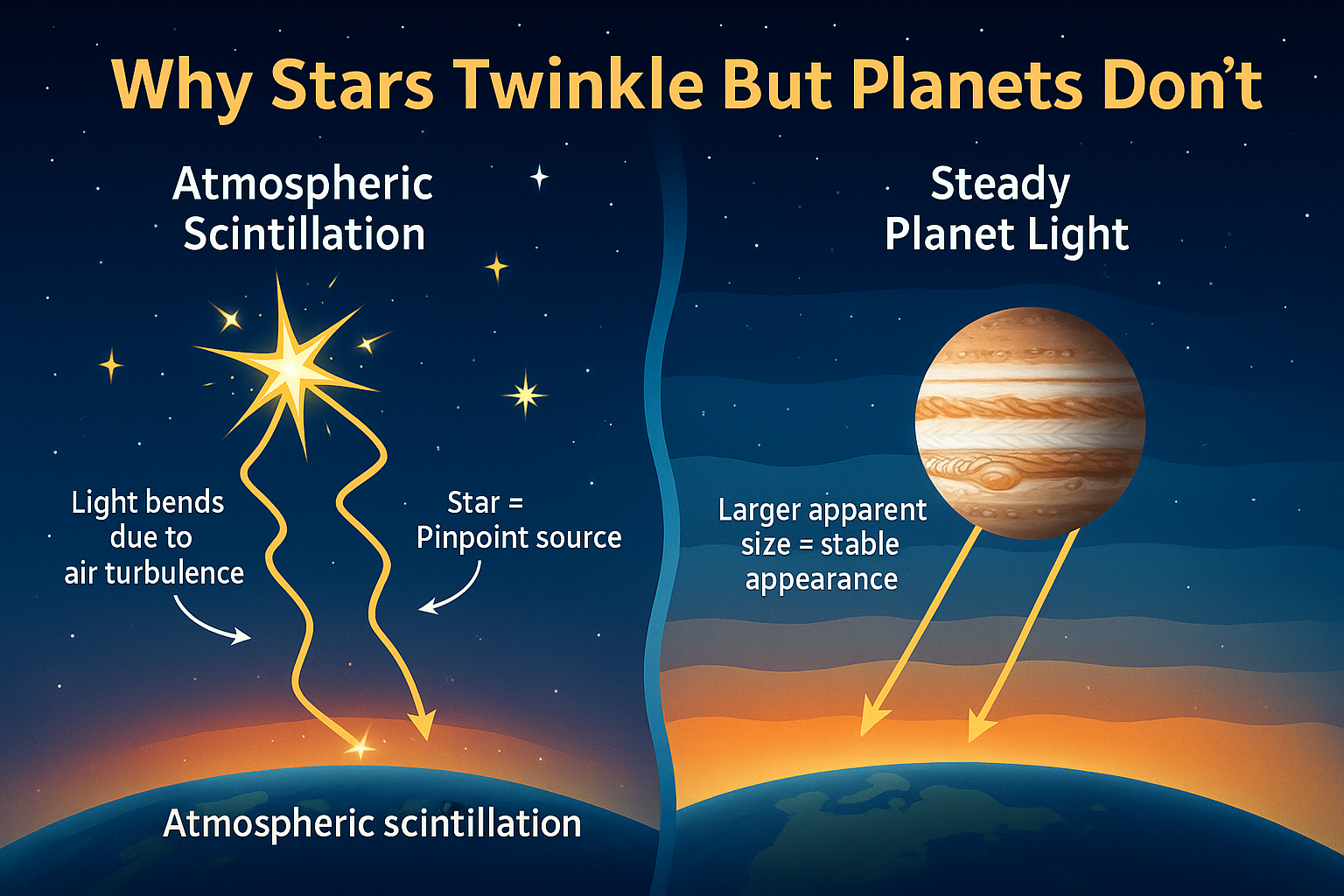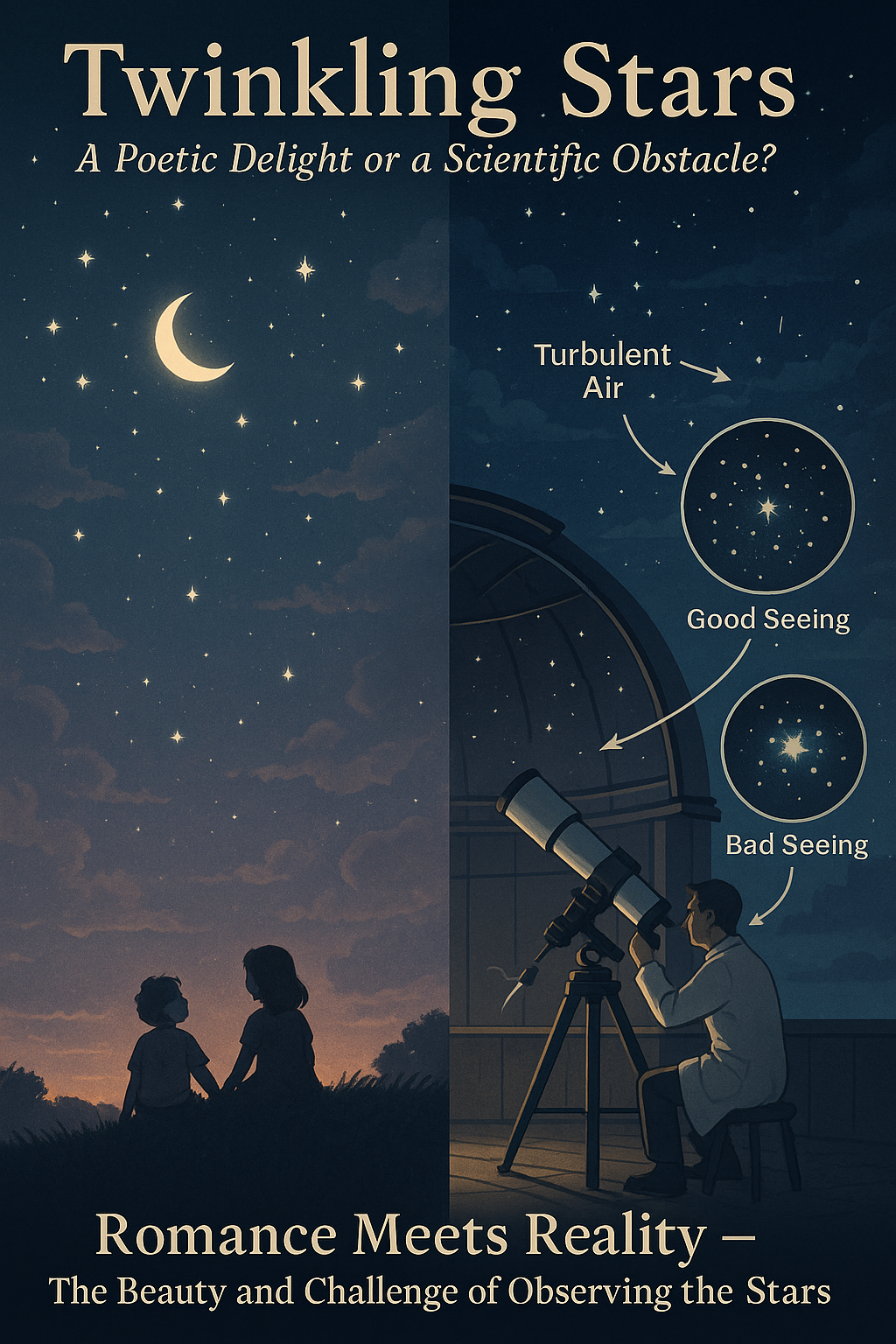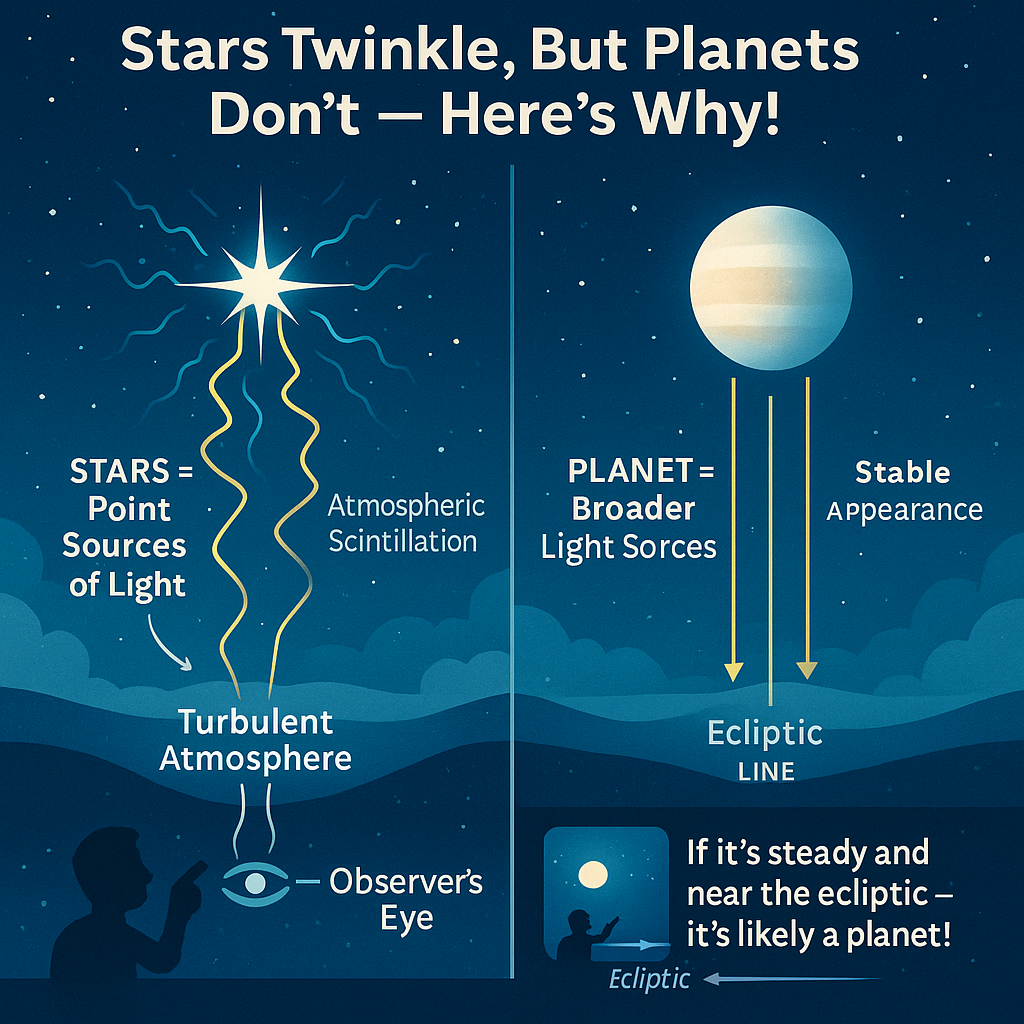Why Do Stars Twinkle?

Why Do Stars Twinkle While Planets Don't?
Stars Twinkle Discover The Science Behind This Celestial Illusion. On A Clear Night Sky, You’ve Likely Noticed That Stars Appear To Twinkle, As If They Are Flickering Or Blinking. But Here’s The Surprising Truth: Stars Don’t Actually Twinkle. This Is Just A Visual Illusion Caused By The Earth’s Atmosphere.
The Role Of Earth’s Atmosphere. The Earth’s Atmosphere Stretches Up To Around 10,000 Kilometers Above The Surface, And Within It, Air Currents Are Constantly In Motion Warm Air Rises, And Cool Air Sinks, Creating Turbulence.
As Starlight Travels Through This Layered And Unstable Atmosphere,
It Gets Bent And Refracted Multiple Times Due To Varying Air Densities And Temperatures.
This Continuous Bending Causes The Star’s Light To Appear Unsteady And Shimmering
A Phenomenon Known In Scientific Terms As Atmospheric Scintillation.
What Does Atmospheric Scintillation Do?
Atmospheric Scintillation Causes Rapid Fluctuations In A Star’s:
1. Brightness
2. Color
Apparent Position
That’s Why Sometimes Stars Seem To Sparkle In Red, Blue, Or White Hues, Similar To How A Mirage Dances Above A Hot Road Or Heater.
Then Why Don’t Planets Twinkle?
The Answer Lies In Distance And Apparent Size:
Stars Are Extremely Far Away, So They Appear As Tiny Pinpoints Of Light.
Planets, However, Are Much Closer To Earth And Appear As Larger Disks In The Sky.
Because Planetary Light Covers A Broader Area,
The Atmospheric Distortion Gets Averaged Out, Making Their Light Appear Steady, Smooth, And Flicker-Free.
In Summary:
Stars Twinkle Due To The Turbulent Bending Of Light In Earth’s Atmosphere (Atmospheric Scintillation).
Planets Do Not Twinkle Because They Appear Larger And Their Light Is Less Affected By This Atmospheric Disturbance.
Astronomical Seeing

Twinkling Stars: A Poetic Delight Or A Scientific Obstacle?
For Many, The Sight Of Twinkling Stars Evokes A Sense Of Romance And Nostalgia. It Often Brings To Mind The Beloved Childhood Rhyme “Twinkle Twinkle Little Star,” Infused With A Sense Of Wonder And Dreamy Imagination.
But For Astronomers…it’s A Different Story
While Aesthetically Beautiful, The Twinkling Phenomenon Poses A Significant Challenge For Astronomers. When Observing Celestial Objects Through A Telescope, The Flickering Starlight Causes Images To Appear Unstable, As If They’re Vibrating, Shifting, Or Pulsating — Making Precise Observation Difficult.
The Scientific Term: “Seeing”
In Astronomical Terminology, This Visual Disturbance Is Referred To As “Seeing.”
It Describes How Atmospheric Turbulence Affects The Clarity And Sharpness Of An Observed Object In The Sky.
You’ll Often Hear Astronomers Use These Terms:
“Bad Seeing” – When Atmospheric Conditions Are Poor, Resulting In Blurry, Wobbly, Or Distorted Images.
“Good Seeing” – When The Sky Is Calm And Stable, Allowing For Sharp, High-Resolution Views Through The Telescope.
Romance Meets Reality
So, While Twinkling Stars May Appear To Us As A Poetic Marvel, To Scientists And Skywatchers, They Represent A Technical Hurdle That Must Be Managed To Capture The True Beauty And Detail Of The Cosmos.
Why Do Stars Twinkle, But Planets Don't?

Stars Twinkle, But Planets Don’t — Here’s The Scientific Reason Why! When You Gaze At The Night Sky, You May Notice That Stars Seem To Flicker Or Sparkle.
But Have You Ever Wondered Why Planets Shine With A Steady Glow?
Let’s Explore The Astronomical Explanation Behind This Fascinating Contrast.
Why Do Stars Twinkle?
Stars Are Located Light-Years Away From Earth, So They Appear To Us As Tiny, Pinpoint Sources Of Light. As Their Light Travels Through Earth’s Atmosphere, It Passes Through Layers Of Turbulent Air With Varying Temperatures, Speeds, And Densities. This Causes The Starlight To Be Refracted And Scattered, Making It Look Like The Star Is Twinkling Or Fluctuating In Brightness.
This Effect Is Scientifically Known As Atmospheric Scintillation.
Why Don’t Planets Twinkle?
Unlike Stars, Planets Are Much Closer To Earth And Appear Slightly Larger In Angular Size.
The Light We See From Them Is Reflected Sunlight, And It Reaches Us In A Broader Beam Compared To The Sharp Rays Of Starlight. This Wider Light Beam Is Less Affected By Small Atmospheric Changes, So Any Distortion Gets Averaged Out, Resulting In A Smooth And Stable Appearance — No Twinkling!
Bonus Observation Tip: How To Identify A Planet
Still Not Sure If That Bright Object In The Sky Is A Star Or A Planet?
Here’s A Handy Clue:
If It’s Not Twinkling,
And Appears Along Or Near The Ecliptic (The Sun’s Path Across The Sky),
There’s A Strong Chance You’re Looking At A Planet!
